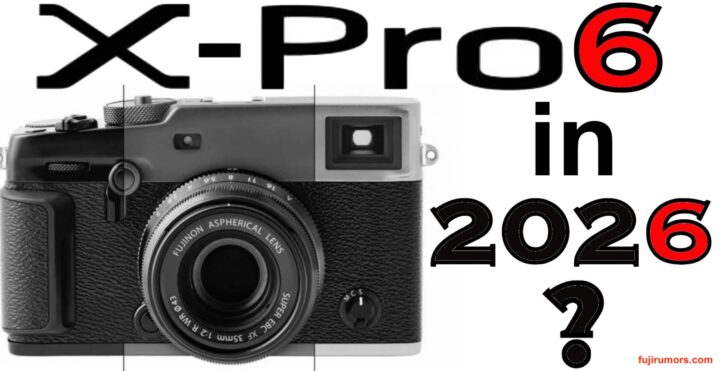Fujifilm Gear Coming 2025 – Updated List and What’s Missing!

Last year we investigated how much gear Fujifilm launches every year (see list below). The result: between 2 to 4 cameras a year and 4 lenses a year.
So let’s see at which point we are in 2025 so far.
Gear (to be) released in 2025
- Fujifilm GFX100RF – already released
- Fujifilm GFX Eterna – development announcement
- Fujifilm X-E5 – rumored
- Fujifilm half frame camera – rumored
- Fujinon GF32-90mmF3.5 – development announcement
- Fujinon XF23mm pancake – rumored
So we have 4 cameras coming for sure in 2025, which matches Fujifilm’s best years in terms of number of cameras released. And while we can always hope for a 5th camera, it is also possible that in terms of cameras, this is all we get. What is sure: the Fujifilm X-Pro4 will not come in 2025.
If you look at lenses, Fujifilm has pretty much consistently released 4 lenses a year. So far we know of one coming for sure, the Fujinon GF32-90mmF3.5, and one being rumored, the Fujinon XF23mm pancake. If Fujifilm were to match the previous years, then there could be still 2 more lenses coming in 2025.
At this point in time, I have no idea which additional lenses could come, but I hope that maybe sources will reach out to us and give us a hint of what’s to come. And if that happens (and if sources agree), I will share it will all of you here on FujiRumors.
In the meantime, these are the lenses the FR community wants based on Fujifilm’s suggestions, and these are the most wanted lenses based on our own mega survey.
Gear released in 2024 – 4 cameras and 4 lenses
- Fujifilm X100VI
- Fujifilm X-T50
- Fujifilm X-M5
- Fujifilm GFX100S II
- Fujinon XF16-50mmF2.8-4.8
- Fujinon XF16-55mmF2.8 II
- Fujinon XF500mmF5.6
- Fujinon GF500mmF5.6
Gear released in 2023 – 2 cameras and 4 lenses
- Fujifilm X-S20
- Fujifilm GFX100II
- Fujinon XF8mmF3.5
- Fujinon GF55mmF1.7
- Fujinon GF30mmF5.6 Tilt Shift
- Fujinon GF110mmF5.6 Tilt Shift
Gear released in 2022 – 3 cameras and 4 lenses
- Fujifilm X-T5
- Fujifilm X-H2
- Fujifilm X-H2s
- Fujinon XF 30mmF2.8 Macro
- Fujinon XF 56mm f/1.2 R WR
- Fujinon XF 150-600mm f/5.6-8
- Fujinon XF 18-120mm f/4
Follow FujiRumors on Patreon, Facebook, Instagram, RSS-feed, Youtube, Flipboard and Twitter
- Fujifilm Film Simulation Group
- Fujifilm X-T Shooters Group
- Fujifilm X100 Shooters Group
- Fujifilm GFX Shooters Group
- Fujifilm X-Pro Shooters Group
- Fujifilm X-H Shooters Group
- Fujifilm X-E Shooters Group
- Fujifilm X Third Party AF lenses Group
- Fujifilm Astrophotography Group
- Viltrox X mount lenses Group
- Fujifilm X-S shooters Group




